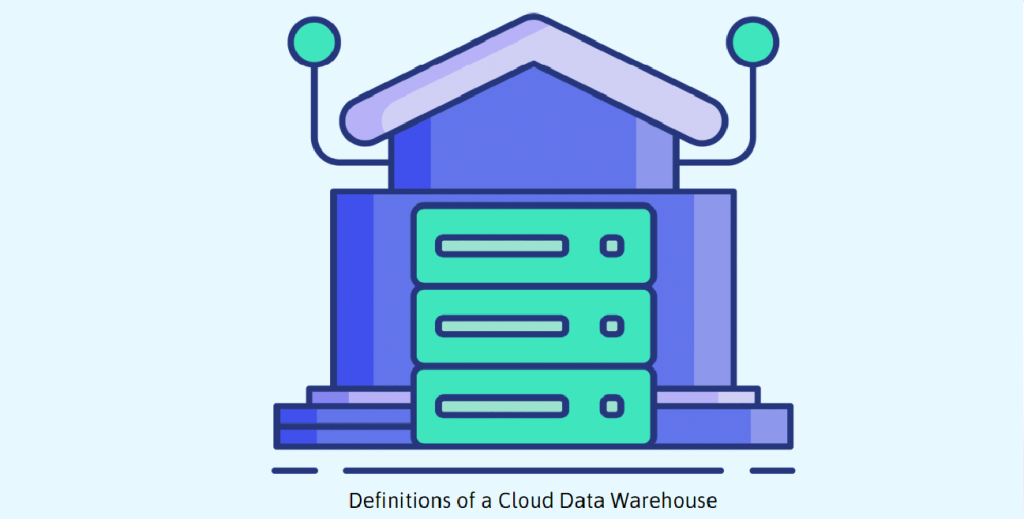Cloud Data Warehouse Providers is a database that is made for analytics, scalability, and usability and is made available in a public cloud as a managed service.
Contents
1. Definitions of a Cloud Data Warehouse
A data warehouse consolidates data from various sources into one place for simpler access, blending, and analysis. Data warehouses are built and tailored for massive data storage and quick data querying.
Data from various sources, including point-of-sale transactions, marketing automation, client relationship management, and more, is analyzed and reported on using an enterprise system called a data warehouse.
Analysis and customized reporting are both appropriate for a data repository. A data warehouse is a key part of business intelligence because it can hold both current and historical data in one location and is made to provide a long-term perspective of data over time.
2. Factors to Take into Account When Selecting a Cloud Data Warehouse Providers
An company should take into account a number of factors when selecting a cloud data warehouse service.
Presently Cloud Data Warehouse Providers: In order to facilitate deployment and use for cloud data warehouse users, each of the main public cloud service providers has a data warehouse that offers integration with current resources.
Capability of data migration: Think about the various kinds of data the company has and where it is kept. It is crucial to have the ability to successfully migrate data into a new data warehouse.
Choices for storage: Although data warehouse solutions can be used to keep data, having access to widely available cloud storage services can offer more affordable alternatives
3. Top of Cloud Data Warehouse Providers which make it better

3.1. Amazon Redshift
Potential purchasers’ value proposition: Redshift, Amazon’s entry into the market for cloud data warehouses, is the best option for businesses that have already engaged in deployment.
The performance of Redshift, which takes advantage of AWS infrastructure and big parallel processing data warehouse design for distributing queries and data analysis, is one of the advantages that users frequently mention.
Advice for Integration:
- Amazon CloudWatch
- Amazon DynamoDB
- Amazon S3
- Amazon Aurora PostgreSQL
- Amazon RDS for PostgreSQL
3.2. SAP Data Warehouse Cloud
In the fields of corporate analytics and data development, SAP is well-known. Businesses that want to make wiser business choices should use the SAP data warehouse cloud. By consolidating all of your distinct data sources into a singular environment using this enterprise-ready data warehouse, you can increase the security and reliability of your information.
With persona-driven and analytical warehouse information, SAP’s data warehousing semantic component also aids in making analytics simpler for users.
3.3.Oracle Autonomous Data Warehouse
Value Proposition: The Oracle Autonomous Data Warehouse may be the simplest option for current Oracle database customers, providing a connected onramp into the cloud.The fact that Oracle operates the Autonomous Data Warehouse on Exadata hardware systems, which were created specifically for Oracle databases, is one of the company’s key differentiators.
The service combines reporting services and a web-based notebook to share data analysis and facilitate simple collaboration.
Advice for Integration:
- Oracle Machine Learning
- Oracle Data Visualization Desktop
- Oracle Analytics Cloud
3.4. Snowflake
A selling point for prospective customers. Any company looking for a variety of public cloud providers with data warehouse capabilities should consider Snowflake.
Data storage is given on the user’s preferred cloud provider thanks to the decoupled Snowflake architecture, which enables compute and storage to grow separately.
Different workloads can share the same data but still function separately thanks to the system’s creation of a “virtual data warehouse,” as Snowflake puts it.
Advice for Integration:
- Alteryx
- Salesforce
- Qlik
- Tableau
4. Benefits of Cloud-Based Data Storage

4.2. Availability
4.3. More effective Disaster Recovery
With legacy data centers, disaster recovery is frequently in doubt. Companies that use legacy data warehouses must spend a lot of money on the hardware necessary to backup their data in case of catastrophe. Additionally, these businesses must make extra effort to protect the data in these backup locations and choose which employees should have access.
The majority of these issues are reduced when using a contemporary online DWH.
5. Drawback of Cloud Data Warehouse
- Traditional on-premises data warehousing technologies and methods have a high total cost of ownership and necessitate costly and specialized skill sets for environment maintenance.
- Brittle architecture makes it difficult for IT to quickly adopt and deploy new use cases with the intended features.
Adopting a cloud data warehouse has a lot of possible advantages, but it also carries a lot of risks, just like any modernization of a sizable application. Businesses cannot afford any interruptions to their regular activities. They must have a thorough grasp of all the procedures necessary to run the data warehouse, as well as all the existing data assets they have there. Equally significant are the current applications and data consumption processes that make use of the warehouse’s data and give the company the information it requires.
In brief, organizations can speed up old migrations and create an agile, adaptable, cost-effective, and well-governed cloud data warehouse by equipping data warehouse modernization with the proper tools and procedures.

